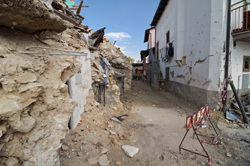Shaking the foundations of earthquake hazard prediction
One of the key steps in hazard assessment in the face of earthquakes is to use a ground motion prediction equation (GMPE). This forms the basis for an estimation of the level of shaking according to seismological data such as earthquake magnitude and distance of a site from the source. Up to now, data has been used from strong ground motion records which are inappropriate for use in regions of low to moderate seismicity, as in western central Europe. Moreover, data is normally from models in other continents like Asia and the Americas. However, a unified seismic hazard assessment specifically for the Euro-Mediterranean region is currently under development by the Seventh Framework Programme (FP7) project 'Seismic hazard harmonization in Europe' (SHARE). High quality data is now available from regions where small earthquakes prevail. Aiming to make use of this information, the EU-funded Seismolos project aimed to understand the non-linear behaviour of some parameters. For example, scaling laws used that predict earthquake stress may not be correct at lower levels. The data can then be applied in models of hazard assessment such as in the SHARE initiative. Project scientists used data from a French metropolitan area and the French West Indies to provide input for future stochastic ground motion models. Another objective was to produce a homogeneous moment catalogue as well as regional attenuation functions. In addition, strong ground motion data from Japan and the United States was analysed to be in a better position to characterise rock site effects, when seismic waves are modified by local geological conditions. More specifically, this take on the data allows for high-frequency attenuation or weakening. The research will help to understand the source of large uncertainties in ground motion modelling. The Seismolos project successfully collected sets of parameters that can be used to model ground motion using the stochastic simulation method. Critical information on engineering requirements, for example, can be extrapolated from resulting models.



